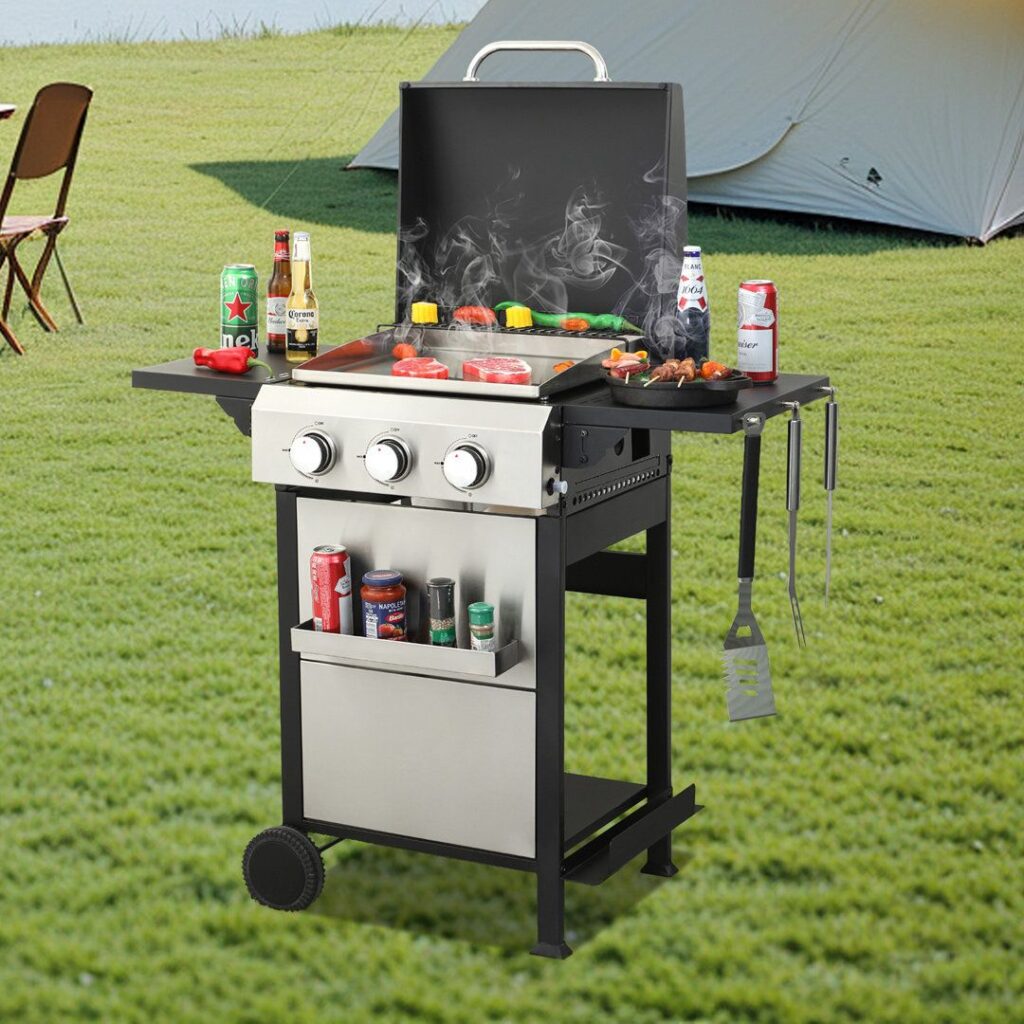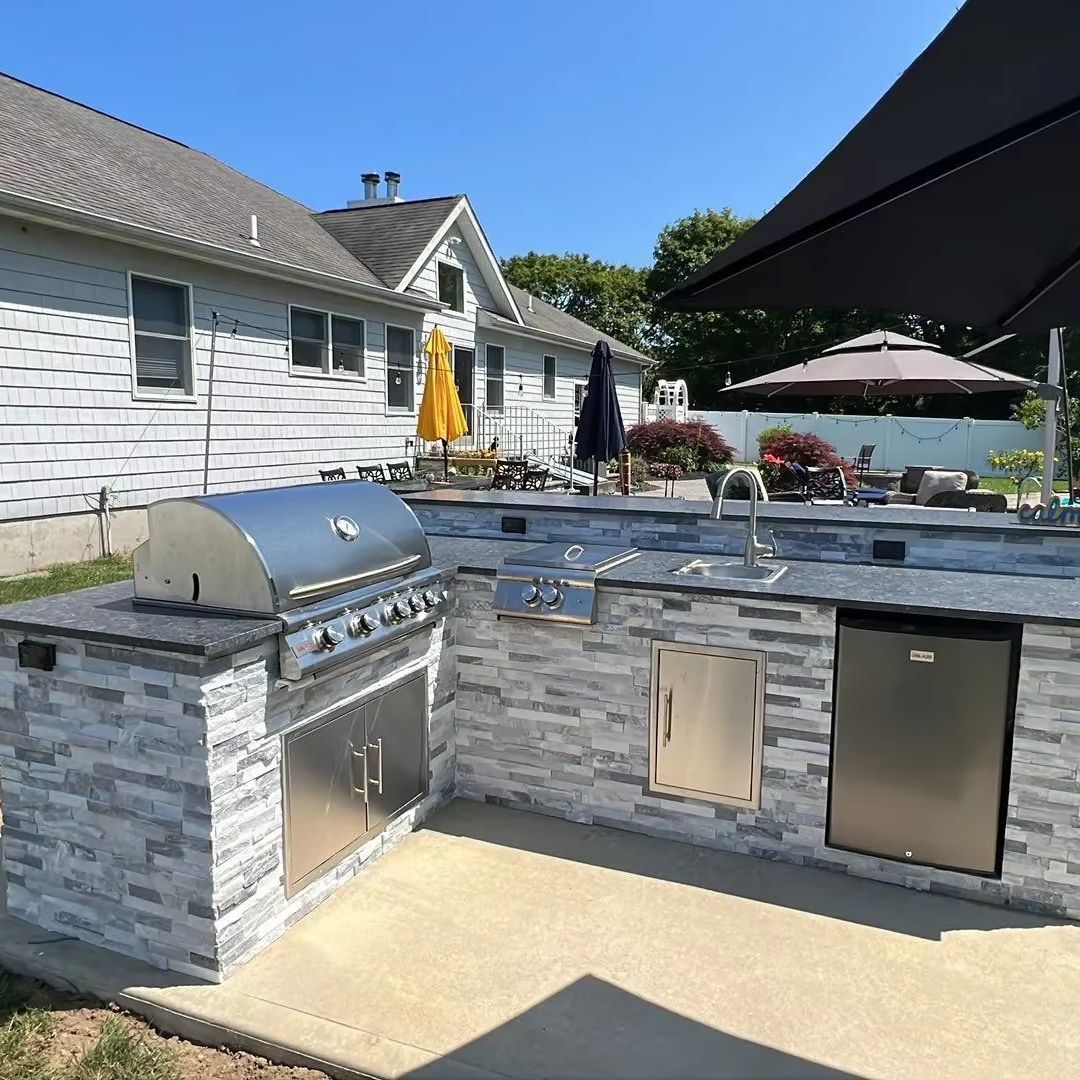Introduction
Wrapping meat in a smoker seems simple. Yet it sparks loud debates at every backyard cookout. Some grillers swear by tight foil. Others rely on pink butcher paper. A few risk nothing at all and let smoke kiss bare bark for hours. Which style wins? And why does it matter to flavor, time, and tenderness?
The best wrap depends on heat flow, bark goals, and the cut of meat. Knowing when and why to cover—or not—puts you in charge of juicy brisket, sweet ribs, and pulled-pork perfection every single weekend, no matter the smoker brand.
Stuck between rival tips online? Stay here. We will strip away jargon, test myths, and lay out clear steps you can follow today. By the end, you will pick the right wrap for any meat without second-guessing.

Why wrap BBQ meats in the first place?
Nobody likes dry brisket or ribs that taste like shoe leather. Wrapping locks in moisture and smooths heat swings.
Wrapping helps meat push through the stall, keeps surface fat from hardening, and guards flavor inside the muscle.
How the stall slows cooking
When meat hits about 150 °F, surface moisture cools it like sweat. The core temp plateaus. It can sit for hours and ruin dinner plans. A wrap acts like a mini sauna.
Moisture, bark, and safety
| Factor | Naked Smoke | Butcher Paper | Foil |
|---|---|---|---|
| Moisture Loss | High | Medium | Low |
| Bark Texture | Crisp | Firm | Soft |
| Heat Retention | Low | Medium | High |
Wrapping also blocks dirty smoke particles that may leave a bitter taste. It lessens nitrogen dioxide contact, trimming that harsh ring of creosote. At the same time, a barrier stops too much surface evaporation. That means meat fibers hold onto collagen and stay tender. Unwrapped cooks have a place—they build thick bark and deep smoke color—but they risk tough spots on lean cuts.
A final bonus is food safety. When poultry sits in the stall, harmful bacteria can multiply. A snug wrap lets meat power through unsafe zones faster. That shortens total time at 40–140 °F and eases risk.
For most backyard chefs, the wrap rule is simple: if the cook time goes beyond six hours or the meat is lean, add a cover. It gives you a bigger safety margin and a more forgiving window to serve.
When should you wrap brisket for peak tenderness?
Poor timing turns brisket from butter to brick. The window to wrap is small yet vital.
Wrap brisket when bark looks dark mahogany and internal temperature reaches about 165 °F.
Bark look beats clock time
Experienced pitmasters watch color, not a timer. A deep brown crust means surface proteins have set. If you wrap too early, steam softens bark into mush. Too late, fat drains out and leaves dry slices.
Core clues and probe feel
| Measure | Target Range |
|---|---|
| Internal Temp | 160–170 °F |
| Bark Color | Dark bronze |
| Fat Render | Starts to drip |
| Probe Resistance | Slight tug |
Slide a thin thermometer into the flat. If it meets light tug, wrap. Use peach butcher paper if you still want a bite in the bark. Choose double-layer foil if you must finish fast. After wrapping, put the brisket back until 203 °F or until a probe slips like warm butter. Rest at least one hour wrapped inside a dry cooler to let fibers relax.
Brisket loves patience. Rushing leads to sliced sawdust. But wrapping at the right moment turns tough connective tissue into soft gelatin without washing away smoky notes. That single step can rescue a 15-pound packer from the trash can.

Do paper wraps really shorten stall time?
Pitmasters often claim pink paper cuts an hour off the cook. Is that true?
Paper trims the stall, but not as much as foil. Expect about 20 % faster rise through the stall compared with no wrap.
Heat dynamics inside paper
Paper is breathable. Steam leaves in tiny bursts. That means less evaporative cooling than naked meat, yet some airflow remains. Foil traps steam fully. So foil finishes quickest but at the cost of bark crunch.
Measured results
| Wrap Style | Time Through Stall* | Bark Texture |
|---|---|---|
| None | 3 h 15 m | Very crisp |
| Pink Paper | 2 h 35 m | Firm |
| Foil | 1 h 50 m | Soft |
*12-lb brisket in a 250 °F offset smoker
Paper keeps enough humidity to escape the stall sooner. But it still vents enough vapor to let smoke compounds stick and harden bark modestly. Think of paper as the middle lane: not blazing fast, not sluggish, but balanced. That makes it a go-to for most backyard cooks who want both speed and texture.
Is foil faster than butcher paper for ribs?
Time matters when hungry friends crowd your porch. Foil is the sprinter here.
Foil can shave 45–60 minutes off a slab of spare ribs compared with paper.
Steam bath vs. slow roast
Foil creates a sealed chamber. Meat juices turn to steam and braise ribs while they smoke. Paper breathes, so ribs cook more like a gentle roast.
Rib cook path
| Stage | No Wrap | Paper | Foil |
|---|---|---|---|
| Smoke 2–3 h | Bark sets | Bark sets | Bark sets fast |
| Wrap 2 h | – | Tender but chewy | Fall-off-bone |
| Glaze 30 m | Sticky | Sticky | Sticky |
Because foil steams, it can over-soften rib bark if left too long. Many pros adopt a 2-1-0.5 method: two hours unwrapped, one wrapped, half hour sauced bare. If you like a bit of chew, switch to 2-1.5-0.5 with butcher paper instead. Paper slows heat just enough to keep bone pull perfect for contest scoring.
Will butcher paper deepen smoky flavor?
Smoke flavor is a mix of time, airflow, and surface moisture. Paper can help.
Butcher paper lets clean blue smoke enter, so flavor compounds keep soaking in after wrapping.
How smoke bonds to meat
Phenols and carbonyls attach best when surfaces are tacky, not wet. Foil traps moisture and makes bark soggy. Paper wicks some steam out, leaving a slightly tacky film ideal for new smoke particles.
Flavor tests
| Wrap | Smoke Ring Depth | Taste Panel Score* |
|---|---|---|
| None | 1.1 cm | 8.2 |
| Paper | 1.0 cm | 8.0 |
| Foil | 0.7 cm | 6.5 |
*10 judges, scale 1–10, brisket slices
Notice smoke ring drops only 0.1 cm with paper but loses big inside foil. Judges rated paper flavor nearly equal to unwrapped. Flavor drops with foil because steam blocks airflow and dilutes smoke molecules. Therefore, pick paper when you want a strong campfire note without pungent ash.
Does wrapping ruin a brisket’s bark?
Soft bark ruins texture. Timing and material save it.
Wrapping can soften bark, but paper keeps 80 % of crunch if done after crust sets.
Managing bark strength
- Set first: Wait until bark is dark and feels dry.
- Paper over foil: Paper breathes and limits sweat.
- Vent late: Near 195 °F, tear a small slit in paper to vent steam.
Bark firmness rating
| Method | Bark Crackle Score* |
|---|---|
| No Wrap | 9 |
| Paper | 7 |
| Foil | 4 |
*Scale 1–10, higher is crunchier
If you must use foil for speed, finish unwrapped for the last 15 minutes while raising pit temp 25 °F. This re-dries the surface and tightens rub spices. The result is closer to a bark made in paper. Remember: bark loss comes from trapped steam, not from the wrap itself.

How tightly should you wrap meat to avoid leaks?
Leaking juices waste flavor and stall temps. Grip matters.
Fold edges snug like a gift box, leaving no side vents, yet avoid pressing wrap into the meat.
Step-by-step secure fold
- Pull two sheets double the meat length.
- Lay meat fat-side up, halfway from edge.
- Fold front over meat, tuck tight.
- Bring sides in, crease them down.
- Roll forward until wrap ends below package.
Common mistakes and fixes
| Error | Result | Fix |
|---|---|---|
| Loose corners | Juice leaks | Add second wrap |
| Meat punctures | Holes | Thicker paper |
| Too tight | Rub smears | Use gloves, roll gently |
A good seal keeps rendered tallow near the meat and creates even heat. But smashing rub into brisket ruins the crust. Balance tight folds with soft pressure. Use nitrile gloves for grip and move slow.
Is aluminum foil safe for marathon cooks?
Health rumors swirl online about foil. Science helps clear smoke.
Current studies show aluminum intake from BBQ foil stays far below safe daily limits.
Heat, acid, and metal transfer
Aluminum leaches more when foil touches acidic ingredients like vinegar sauce. Smoked meats are neutral to mildly basic. Transfer is minor at smoker temps under 300 °F.
Exposure chart
| Scenario | Added Al (mg) |
|---|---|
| 10-hr brisket in foil | 3.2 |
| Daily safe intake* | 40 |
| *Reference: European Food Safety Authority |
The World Health Organization sets Provisional Tolerable Weekly Intake at 2 mg per kg body weight. A 70 kg adult would need to eat over 80 foil-wrapped briskets a week to exceed that. For extra caution, insert a single layer of parchment between meat and foil. It blocks direct metal contact while keeping steam trapped.
Can butcher paper be reused without risks?
Paper feels sturdy. But should you use it twice?
Never reuse butcher paper that touched raw or cooked meat. Fibers trap fat and germs that survive a rinse.
Why single-use only
- Fats soak deep into cellulose.
- Smoke tars stick tight.
- Heat later may not kill spores.
Safe recycle ideas
| Option | Benefit |
|---|---|
| Compost | Turns to soil |
| Fire starter | Lights chimney fast |
| Garden mulch | Blocks weeds |
Unsoiled sections that only wrapped clean surfaces can line trays for serving. But any sheet that met meat belongs in compost. Food safety first.
Which cuts thrive with naked smoke only?
Some meats never need a wrap. They cook fast or have enough fat to stay moist.
Chicken wings, sausages, and beef short ribs usually shine unwrapped thanks to natural fat and short cook times.
Best naked cuts
- Chicken wings: 90-minute cook keeps them juicy.
- Fresh sausage links: Casings self-baste.
- Tri-tip: Thin roast reaches 135 °F in under two hours.
- Short ribs: Marbled fat shields meat.
Quick-reference guide
| Cut | Typical Time | Wrap Need? |
|---|---|---|
| Pork shoulder | 8–10 h | Yes |
| Brisket | 10–14 h | Yes |
| Chicken wings | 1.5 h | No |
| Sausage | 2 h | No |
| Beef short ribs | 5 h | Optional |
| Tri-tip | 2 h | No |
Naked smoke breeds crisp skin on poultry and crusty edges on sausage. For fatty beef ribs, you may choose a paper wrap halfway to control render and speed up dinner, yet many pitmasters skip it. The key is cook length: under three hours rarely justifies a wrap.

Conclusion
Wrapping is not one rule. It is a toolbox. Foil wins speed races. Paper balances bark and time. Naked smoke rewards flavor junkies on quick cooks. Pick the tool that fits your cut, schedule, and texture goal. Then watch confident smiles when your platter lands on the picnic table.

